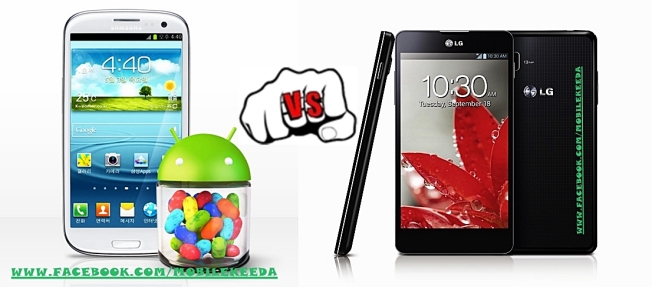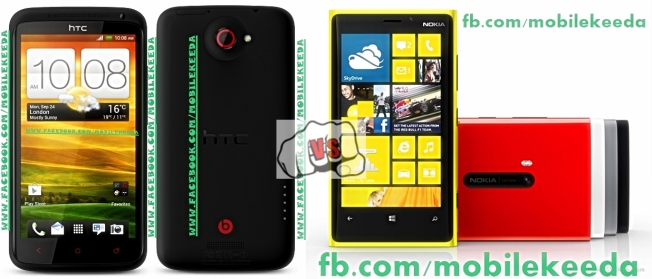
Samsung Galaxy S3 vs LG Optimus G
The Samsung Galaxy S3 is a part of one of the most successful smartphone brands ever. Since the first Galaxy debuted, it has been a roller coaster ride for Samsung, with so many models in its portfolio, spawning a lot of success stories in sales as well as dominance, and right at the top of this is the Galaxy S range of smartphone flagship devices, which have seen three generations of devices and todays, we have chosen the third generation of that series to represent Samsung’s flagship device.
The Galaxy S3, like the other two Galaxy S’ before it, represents Samsung at the high end and like all flagships, it has a lot of firsts. Here are some highlights of the Samsung Galaxy S3 –
1.4 GHz Quad core Exynos processor
4.8 inch 1280×720 SuperAMOLED HD display
8.0 MP BSI f2.8 camera
Countless software enhancements with Touchwiz Nature UX
Currently runs Android Jellybean 4.1.1
As we can see above, at the time of the launch, the hardware was unbelievable but was sort of overshadowed by the HTC One X due to the subjectively not-so-well-received design of the phone. Also, the launch event was a bit of a let down as Samsung tried to do it the Apple way and miserably failed at explaining the most important features of the device that were necessary for people to understand. Instead, the gimmicks, although very novel, like the Smart stay feature, were over blown and hence it took time to pick up in terms of mind share. But once the user reviews started pouring in, it was extremely clear that Samsung had a winner.
In every sense, the Galaxy S3 is a well rounded device and Samsung must be lauded for taking this device everywhere. It’s definitely the most available flagship and that’s a serious achievement that followed tremendous sales. But while all this happened, what was Samsung’s in-home competitor doing? That’s exactly the question that arose within the competitor itself and hence the LG Optimus G was born.
The Optimus G is, in every sense, a direct competitor to Samsung’s flagship, as it is the way it has been since the Galaxy S. The Optimus series of devices are LG’s answers to the Galaxy’s of this world, and that has stayed true till the latest LG flagship, the Optimus G. While it has not been released completely, or even in the U.S, we find this device is every bit worthy of a flagship from the other Korean giant. It’s also an attestation to the fact that LG has been awakened due to their miserable performance in the Smartphone segment for the past two years in which their competitors soared way higher.
This is also the first time that three LG subsidiaries came together for making this device, LG chem, LG displays and LG mobile. In that sense, the device sports probably one of the best HD IPS panels ever made, and finally sports a fresh design with a glass backing, moving away from soulless plastic designs from the past. Here are the highlights of this device –
4.7 inch 1280×768 IPS TFT zero gap display, easily one of the best
1.5 GHz Quad core Snapdragon S4 PRO processor
Fresh new design with a glass backing and a pattern
13 MP camera
Currently runs Android ICS
LG, unlike other manufacturers, has been majorly criticised for one thing, regular updates to its phones. While the skin is getting better, the update situation currently is horrendous and even affects the latest devices it has released. But it is also widely known that the Nexus 4 is completely based on the LG Optimus G and hence that gave a huge sigh of relief for potential users, knowing that they can one way or the other use stock Android on this one fine day. But again, the major roadblock has been availability and it continues to evade users who are willing to plonk their precious cash on it.
With that said, the Optimus G definitely has been LG’s “awakening” and has proven that it is good enough for being selected for the Nexus program by Google. And yes, it has definitely given a good fight to the Samsung Galaxy S3 in terms of specs and features but then, success depends on sales and it seems LG still needs to catch up, a long way.
